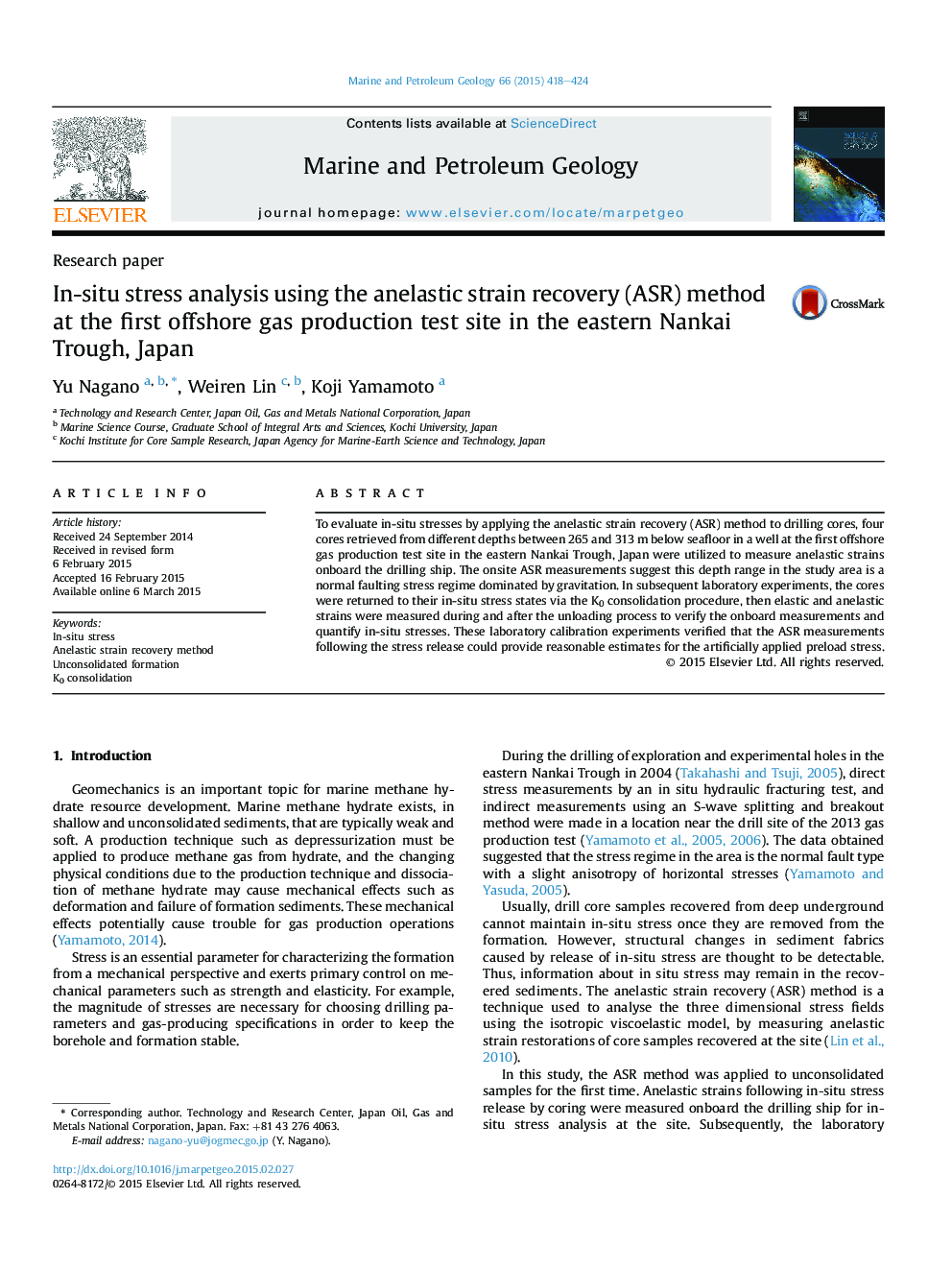| Article ID | Journal | Published Year | Pages | File Type |
|---|---|---|---|---|
| 6435024 | Marine and Petroleum Geology | 2015 | 7 Pages |
â¢We evaluated in-situ stresses at the first offshore gas production test site.â¢The anelastic strain recovery (ASR) method was applied to drilling cores.â¢Calibration experiments with K0 consolidation were carried out.â¢The stress state at the surveyed depth in the study area is “state at rest”.â¢Horizontal stresses in the study area are essentially homogeneous.
To evaluate in-situ stresses by applying the anelastic strain recovery (ASR) method to drilling cores, four cores retrieved from different depths between 265 and 313Â m below seafloor in a well at the first offshore gas production test site in the eastern Nankai Trough, Japan were utilized to measure anelastic strains onboard the drilling ship. The onsite ASR measurements suggest this depth range in the study area is a normal faulting stress regime dominated by gravitation. In subsequent laboratory experiments, the cores were returned to their in-situ stress states via the K0 consolidation procedure, then elastic and anelastic strains were measured during and after the unloading process to verify the onboard measurements and quantify in-situ stresses. These laboratory calibration experiments verified that the ASR measurements following the stress release could provide reasonable estimates for the artificially applied preload stress.
